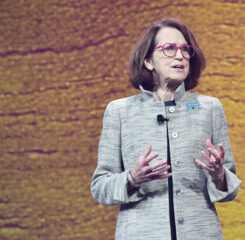“Today, consumers need Internet access for full and meaningful participation in society, says the FCC statement about the reforms to Lifeline, which was established in 1985. “Yet 43% of the nation’s poorest households say they can’t afford modern broadband service.”
The FCC action brings about 2 changes in the Lifeline program.
A Refocus on Broadband: For the first time, the Lifeline program will support stand-alone broadband service and bundled voice and data service packages.
New Rules: The FCC also introduced a number of new rules designed to help the Lifeline program combat waste, fraud, and abuse and increase its efficiency. The rules will:
- Unlock the Lifeline broadband marketplace to attract additional providers.
- Impose new service standards. Those standards will help ensure that supported services meet modern needs.
- Establish an independent National Eligibility Verifier to confirm subscriber eligibility.
- Use a budget mechanism to limit Lifeline’s cost to ratepayers.
“These and other changes will fully modernize Lifeline to support broadband service and obtain the highest possible value from the expenditure of Universal Service funds,” concludes the statement.
Low-income Americans are expected to be able to apply for help from the federal government in paying for Internet access starting December 2016. To learn more about the Lifeline Program for Low-income Consumers, visit the Lifeline website.
CAST’s Reaction
CAST is thrilled to finally see the Lifeline program modernized to cover Internet access for low-income Americans, especially older adults, says Majd Alwan, senior vice president of technology at LeadingAge and CAST executive director. The FCC action is in line with LeadingAge and CAST Technology Policy Priorities and is what LeadingAge and CAST have advocated for a long time, he says.
“Internet access is essential today to many technology applications and technology-enabled services that can improve the safety, wellness, health, and social connectedness of older adults” says Alwan. “We believe that having such access will allow LeadingAge provider members to reach and help more of this particularly vulnerable population.”

 Improving Medicare Advantage
Improving Medicare Advantage Analysis: MedPAC Recommends No Payment Update for Hospice
Analysis: MedPAC Recommends No Payment Update for Hospice Update and Insights: Off-Cycle Revalidations
Update and Insights: Off-Cycle Revalidations


